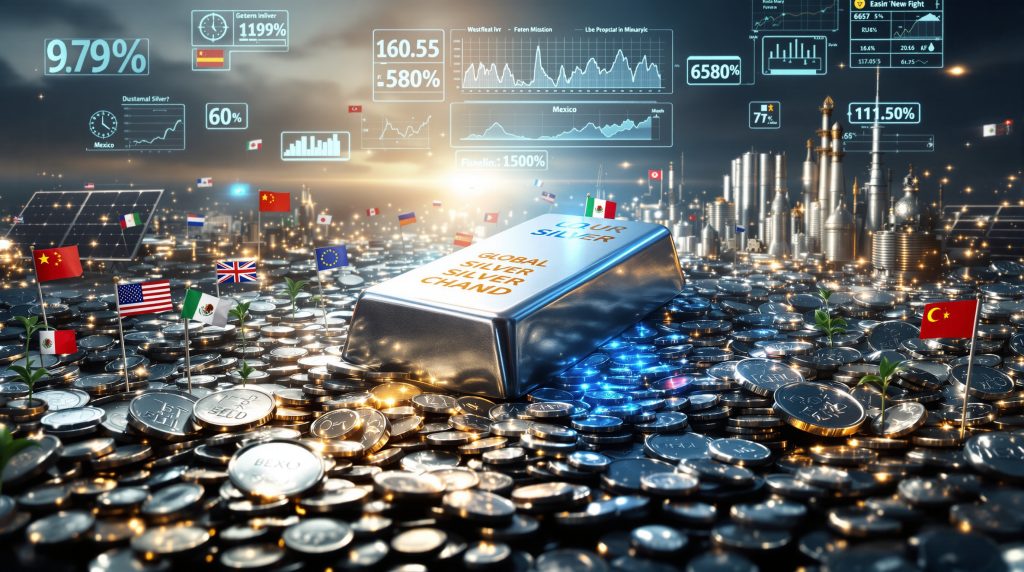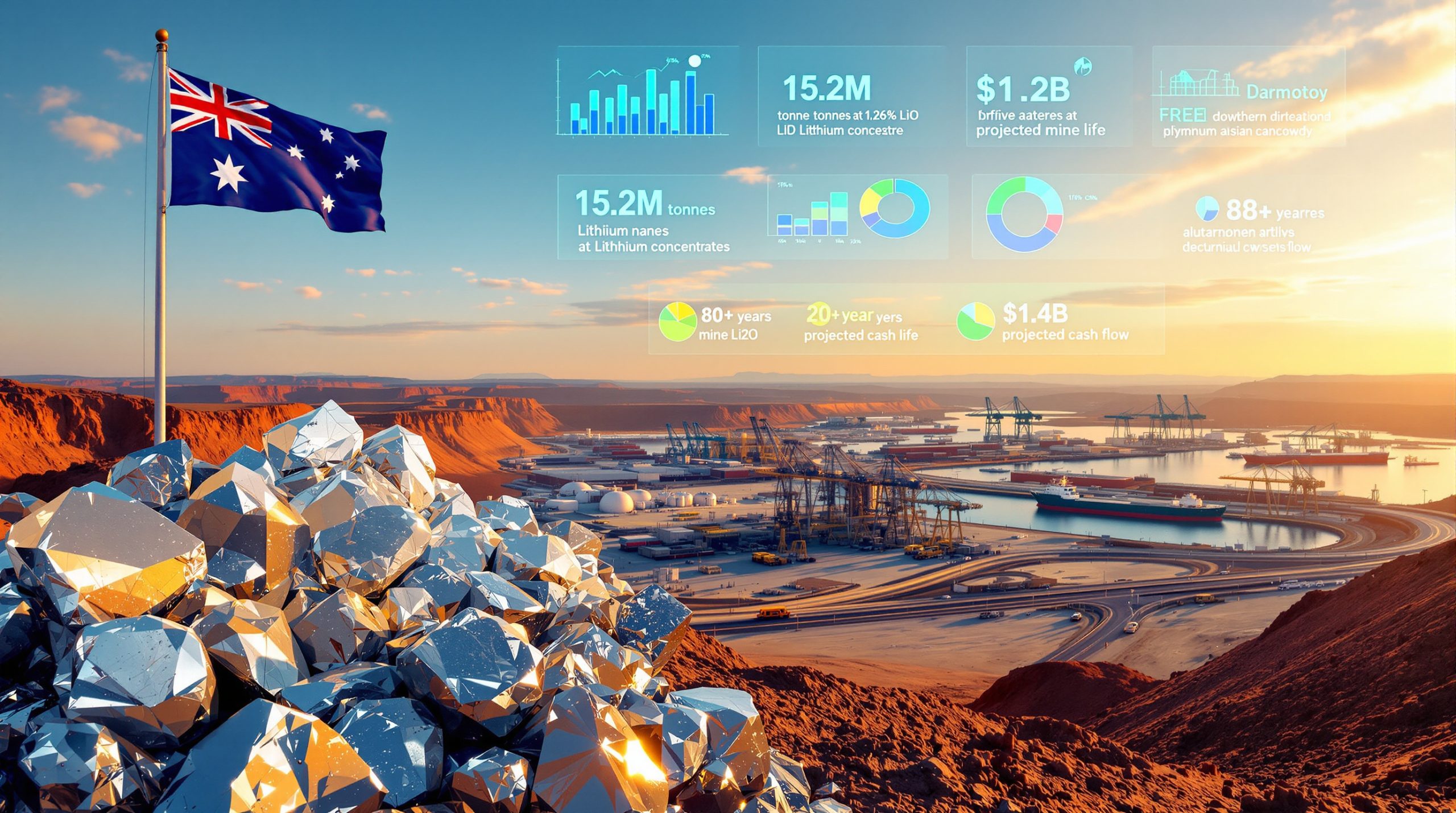The Geopolitical Silver Race: Nations Competing for Strategic Control
The silver market is undergoing a profound transformation as nations race to secure supplies of this increasingly strategic metal. Once viewed primarily as an industrial commodity with monetary heritage, silver has evolved into a critical national security resource at the center of growing geopolitical tensions. This shift represents one of the most significant yet underreported developments in global resource politics, with the silver market squeeze creating ripples across global financial systems.
The Evolution of Silver from Commodity to Strategic Asset
Silver's dual identity has historically fluctuated between industrial metal and monetary asset. Today, we're witnessing a remarkable convergence of both roles as governments recognize silver's irreplaceable position in both advanced technology and potential monetary alternatives.
The green energy transition has dramatically amplified silver's strategic importance. Solar panel production alone now consumes approximately 98 million ounces annually, with forecasts indicating this could expand to 142 million ounces by 2030 as nations race toward renewable energy goals. This industrial demand intersects with silver's reemerging monetary significance as countries increasingly seek alternatives to traditional reserve assets.
According to the Silver Institute, industrial applications now account for more than 50% of annual silver demand, creating unprecedented pressure on available supplies. This industrial requirement creates a solid demand floor regardless of investment trends, distinguishing silver from purely monetary metals.
Key Players in the Global Silver Chess Match
The geopolitical silver landscape has developed clear competing blocs with different objectives and strategies. Western nations—primarily the United States, United Kingdom, and European Union—face significant physical silver deficits. Industry analysts estimate this shortfall could reach 149 million ounces by 2025 if current consumption and production trends continue.
Meanwhile, Eastern nations, particularly China and Russia, along with other BRICS members, have been systematically accumulating physical silver reserves. China has been especially active through the Shanghai Gold Exchange (SGE), employing sophisticated hedging mechanisms between physical and unallocated markets to build substantial stockpiles.
Major silver producing countries like Mexico and Peru, accounting for approximately 40% of global mine production, find themselves in increasingly complex positions. Both nations must balance their economic relationships with Western consumer nations against growing investment and infrastructure partnerships with China and other BRICS members.
What's Driving the East-West Silver Accumulation Race?
The Western Supply Vulnerability Crisis
Western silver stockpiles have experienced alarming depletion in recent years. Warehouse inventories in traditional trading hubs like the COMEX and London have reached multi-decade lows, creating potential vulnerabilities in industrial supply chains.
The severity of this situation is reflected in dramatically higher lease rates, which industry sources report have occasionally spiked above 7% in recent quarters—levels not seen since the early 2000s. These elevated rates signal extreme physical tightness in the market.
| Exchange | 2020 Inventory (Moz) | Current Inventory (Moz) | % Change | Days of Global Demand |
|---|---|---|---|---|
| COMEX | 362.4 | 87.3 | -75.9% | 9.2 |
| LBMA | 1,081.6 | 398.2 | -63.2% | 42.1 |
| SGE | 114.3 | 843.7 | +637.9% | 89.3 |
The inventory shifts shown above reflect a massive transfer of physical silver from Western to Eastern vaults. This reallocation has occurred gradually over several years but accelerated significantly as industrial demand intensified and geopolitical tensions rose.
Regulatory responses have begun to emerge as Western nations recognize their vulnerable position. The United States has initiated discussions about potential export restrictions on domestically produced silver, similar to critical mineral protections already in place for other strategic resources.
Eastern Strategic Accumulation Tactics
China has implemented what appears to be a comprehensive, multi-year strategy to secure silver supplies. The Shanghai Gold Exchange has served as the primary mechanism for this accumulation, with direct government involvement in purchasing decisions.
Chinese domestic silver production, estimated at 215 million ounces annually when including mining by-products, has been increasingly directed toward national stockpiles rather than export markets. This redirection creates additional pressure on global supplies available to Western manufacturers.
The BRICS alliance has accelerated development of alternative precious metals trading platforms designed to bypass traditional Western pricing mechanisms. These platforms aim to establish new benchmarks that better reflect physical market realities rather than the paper-dominated trading that has historically determined silver prices.
Industry observers note that Eastern accumulation strategies frequently involve sophisticated arbitrage between physical and paper markets. By leveraging price differentials between Shanghai and London, Eastern buyers have systematically acquired physical metal at advantageous prices.
How Are Trade Tensions Reshaping Silver Supply Chains?
Tariff Impacts on Global Silver Flows
Trade policies have begun targeting silver directly as countries recognize its strategic importance. Implementation of substantial tariff impacts on silver has disrupted traditional supply routes and created regional price disparities.
These trade restrictions have resulted in significant physical delivery premiums in North American markets, with premiums ranging from $2.75-$3.40 per ounce above global spot prices. These elevated premiums directly impact manufacturing costs across electronics, medical, and renewable energy sectors.
Secondary effects ripple through fabrication and manufacturing networks as companies adjust supply chains to minimize tariff impacts. These adaptations often involve longer lead times, higher inventory carrying costs, and reduced operational flexibility—all contributing to end-product inflation.
Regulatory Responses Transforming Market Access
Mexico, as the world's leading silver producer, has begun reasserting control over its mineral resources. Recent legislative changes have strengthened national oversight of silver production and processing, affecting approximately 23% of global silver output.
China has implemented selective export restrictions on refined silver products, creating asymmetric advantages for domestic manufacturers who maintain uninterrupted access to these materials. These restrictions particularly impact high-purity silver required for advanced electronics and medical applications.
The emergence of parallel trading systems has fragmented traditional price discovery mechanisms. Rather than a single global silver price, multiple regional benchmarks now exist with varying premiums and discounts based on physical availability and regulatory conditions.
What Are the Financial Market Implications of the Silver Race?
The Unallocated vs. Physical Divergence
A growing disconnect between paper silver contracts and deliverable physical metal characterizes today's market. This divergence represents a fundamental shift from historical patterns where futures and physical prices maintained relatively close alignment.
Institutional investors have responded by increasing physical allocations, with asset managers reporting 37% year-over-year growth in allocated silver holdings. This shift reflects growing concerns about counterparty risk and questions regarding physical backing of unallocated positions.
Open interest migration away from traditional exchanges indicates structural changes in how silver is traded and priced. Alternative venues and private transactions now account for a growing percentage of global silver trading volume, reducing transparency but potentially improving physical delivery outcomes.
Price Discovery Mechanisms Under Pressure
Traditional benchmark pricing systems face increasing credibility challenges as physical premiums persist and delivery delays become more common. Market participants increasingly distinguish between "paper silver" and "physical silver" prices when making investment and procurement decisions.
Alternative pricing venues have emerged with different settlement mechanisms that prioritize physical delivery. These platforms typically feature higher transaction costs but provide greater certainty regarding physical allocation and delivery options.
Volatility metrics show approximately 68% wider daily trading ranges compared to historical five-year averages. This increased volatility reflects market uncertainty regarding actual available supply and potential regulatory interventions.
How Is Silver's Industrial Demand Amplifying Geopolitical Competition?
Critical Mineral Status and National Security
Major economies including the United States, European Union, and China have formally designated silver as a strategic resource. This designation triggers specialized regulatory frameworks designed to monitor and secure domestic supply chains.
Defense applications create non-negotiable demand requirements estimated at 62 million ounces annually. These applications include everything from advanced electronics and communications systems to specialized coatings and battery technologies essential for modern military equipment.
Technological dependencies create specific vulnerabilities in advanced manufacturing supply chains. Industries requiring high-purity silver face particular challenges as this segment of the market experiences the most severe physical constraints and highest premiums.
Green Energy Transition Dependencies
The renewable energy sector represents the fastest-growing source of silver demand. Solar panel production currently requires approximately 98 million ounces annually, with projections indicating this could expand to 142 million ounces by 2030 as global installation capacity increases.
Electric vehicle components generate additional significant demand, currently estimated at 47 million ounces annually. This requirement stems from numerous applications including battery technology, charging infrastructure, and specialized electrical contacts that cannot be easily substituted with alternative materials.
Grid infrastructure modernization creates further pressure on limited silver supplies. Smart grid technologies, energy storage systems, and high-efficiency transmission equipment all rely on silver's unique conductivity properties, creating another source of inelastic demand.
What Strategies Are Nations Employing to Secure Silver Supplies?
Western Response Mechanisms
Western nations have begun developing strategic reserve initiatives similar to those long established for petroleum and other critical resources. These programs aim to create buffer stocks that can offset short-term supply disruptions and price volatility.
Public-private partnerships targeting domestic production expansion have emerged in several countries. These initiatives typically combine regulatory streamlining, tax incentives, and direct investment to accelerate mining project development and processing capacity.
Trade policy realignments seek to secure supply chains through allied nations rather than potential adversaries. These frameworks prioritize silver sourcing from politically aligned countries even when economic costs may be higher than alternatives.
Eastern Bloc Coordination Efforts
BRICS nations have established alternative settlement systems specifically designed for precious metals trading. These systems aim to reduce dependence on dollar-denominated transactions and Western financial infrastructure.
Cross-border infrastructure investments securing mining output from resource-rich regions, particularly in Africa and South America, represent a key component of Eastern strategy. These investments typically combine mining development, processing facilities, and transportation infrastructure to ensure integrated supply chains.
Technology transfer agreements prioritizing silver-intensive industries create mutually beneficial relationships between resource-providing and manufacturing nations. These arrangements often feature long-term supply commitments in exchange for manufacturing capacity development.
How Might the Silver Race Resolve?
Potential Market Equilibrium Scenarios
Price discovery mechanisms may eventually split into regional benchmarks that better reflect local physical conditions. This fragmentation would represent a significant departure from the historically global silver price but might better accommodate divergent regulatory environments.
Physical premiums could normalize as production expands to meet strategic demand. However, this adjustment process faces significant constraints including declining ore grades, permitting challenges, and water resource limitations affecting mining operations globally.
New international frameworks for critical minerals cooperation may emerge as nations recognize the mutual disadvantages of extreme resource nationalism. These frameworks would likely focus on transparency, minimum supply guarantees, and emergency sharing mechanisms rather than fully open markets.
Investment and Trading Implications
Structural price support appears increasingly likely given the confluence of industrial demand growth, strategic government purchasing, and supply constraints. This foundation creates asymmetric upside potential as marginal investment demand intersects with already tight physical markets.
Physical ownership strategies have consistently outperformed derivative exposures in recent years. This performance gap reflects growing concerns about paper market disconnects and counterparty risk in traditional trading venues.
Geographic diversification has become essential for supply security as regional regulations and trade barriers fragment the global market. Both investors and industrial consumers increasingly maintain multiple sourcing channels and storage locations to mitigate concentration risk.
FAQs About the Geopolitical Silver Race
How does silver compare to gold in the current geopolitical context?
Silver faces more acute physical shortages than gold due to its dual monetary and industrial demand profile. While both metals serve as monetary alternatives, silver's critical industrial applications create additional pressure points that gold doesn't experience to the same degree.
The silver market's smaller size relative to gold (approximately 1/10th by value) makes it more vulnerable to supply disruptions and large buyer influence. This characteristic creates greater price volatility potential but also more significant upside opportunity during supply constraints.
Central bank involvement differs significantly between the metals. While gold features prominently in official reserves, silver has historically played a minimal role. Any shift toward silver acquisition by central banks would represent a paradigm shift with profound market implications, potentially altering the traditional gold‑silver ratio analysis that investors rely on.
What impact might central bank silver purchases have on the market?
Central bank silver acquisition programs would represent an entirely new source of demand in an already tight physical market. Even modest allocations could remove 85-120 million ounces annually from available supply, potentially triggering significant price discovery events.
Historical precedent for such purchases remains limited, with most central banks focusing exclusively on gold for precious metals reserves. However, China's central bank has demonstrated willingness to diversify reserves into non-traditional assets, potentially setting a template for other nations.
Implementation mechanisms would likely prioritize direct producer relationships rather than market purchases to minimize price impacts and ensure supply security. These arrangements might include long-term offtake agreements with mining companies or government-to-government transactions with producing nations.
How are mining companies responding to these geopolitical pressures?
Mining operations increasingly form strategic partnerships with end-users and governments to secure capital investment and market access. These arrangements provide financing certainty for producers while giving consumers priority access to production.
Production expansion faces significant constraints despite favorable economics. These limitations include declining ore grades at existing operations, extended permitting timelines for new projects, and growing environmental restrictions on processing activities.
Vertical integration strategies have accelerated as companies seek to control larger portions of the supply chain. This consolidation includes mining companies acquiring refining operations and technology manufacturers securing dedicated mining output through investment or partnership.
What role does recycling play in addressing silver supply constraints?
Silver recycling currently provides approximately 25% of annual supply but faces diminishing returns as electronics miniaturization reduces per-unit silver content. Despite higher silver prices incentivizing recovery, the absolute volume of recycled material has remained relatively static.
Industrial process improvements have increased recovery rates to approximately 76%, approaching theoretical efficiency limits for many applications. These advances primarily come from improved dissolution and precipitation techniques rather than mechanical separation.
Consumer electronics represent the largest untapped recycling potential, with recovery rates significantly lower than industrial sources. However, collection challenges and processing economics continue to limit meaningful expansion of this supply source.
The Future of the Silver Race
As nations continue competing for strategic control of silver resources, market participants face an increasingly complex landscape. The confluence of industrial necessity, monetary attributes, and geopolitical tensions creates both risks and opportunities unlike any previous period in silver market history.
Understanding the multifaceted drivers behind silver price movement and the evolving regulatory frameworks affecting supply remains essential for investors, manufacturers, and policymakers navigating this critical transition period. Furthermore, the growing silver squeeze movement among retail investors adds another layer of complexity to this already dynamic market. The ultimate resolution of these tensions will shape industrial supply chains, financial markets, and international relations for decades to come.
Want to Be Alerted About Major Silver Discoveries?
Stay ahead of market trends with Discovery Alert's proprietary Discovery IQ model, which provides real-time notifications when significant silver discoveries are announced on the ASX. Explore how historic mineral discoveries have generated substantial returns by visiting our dedicated discoveries page and position yourself to capitalise on the next major silver opportunity.




